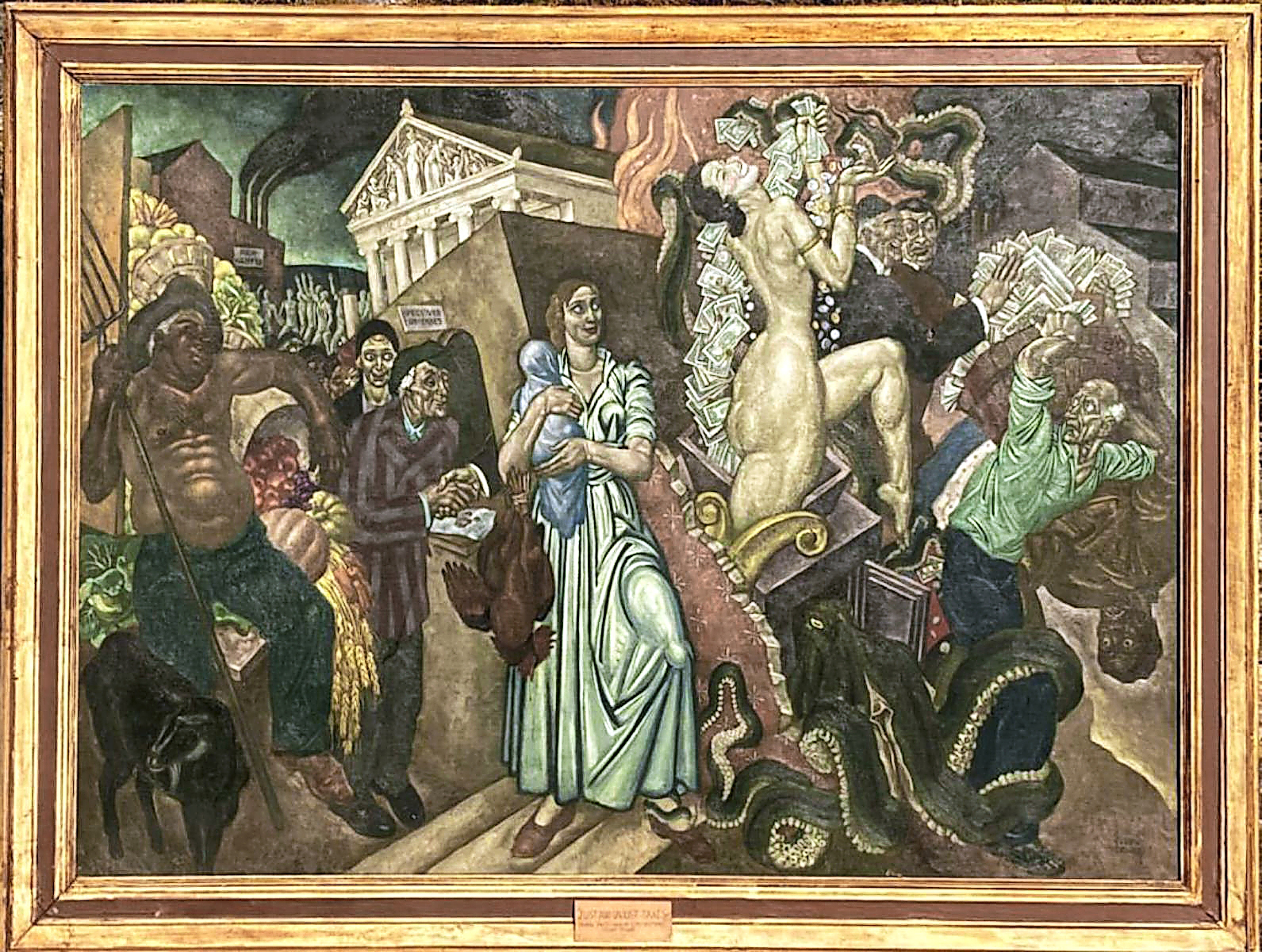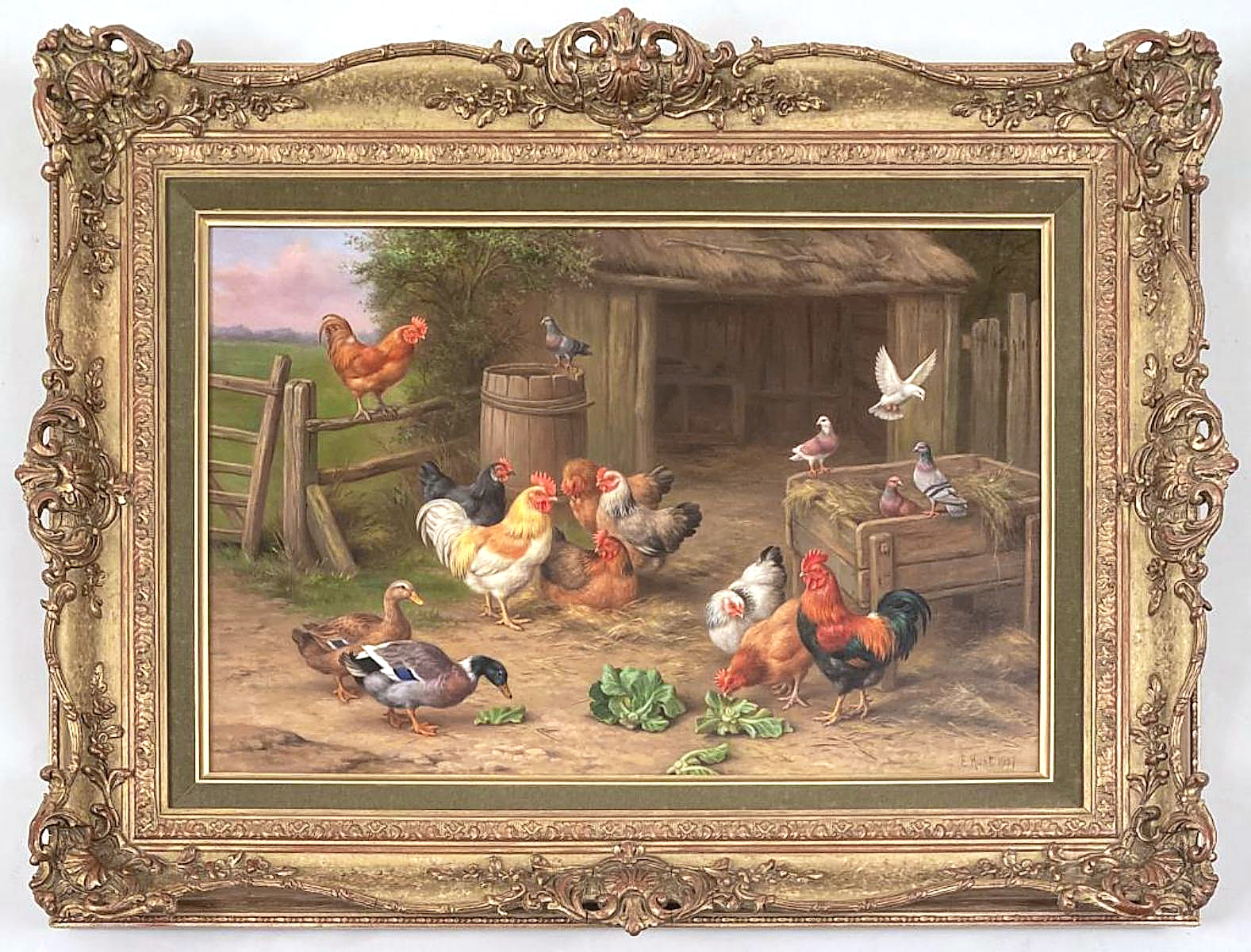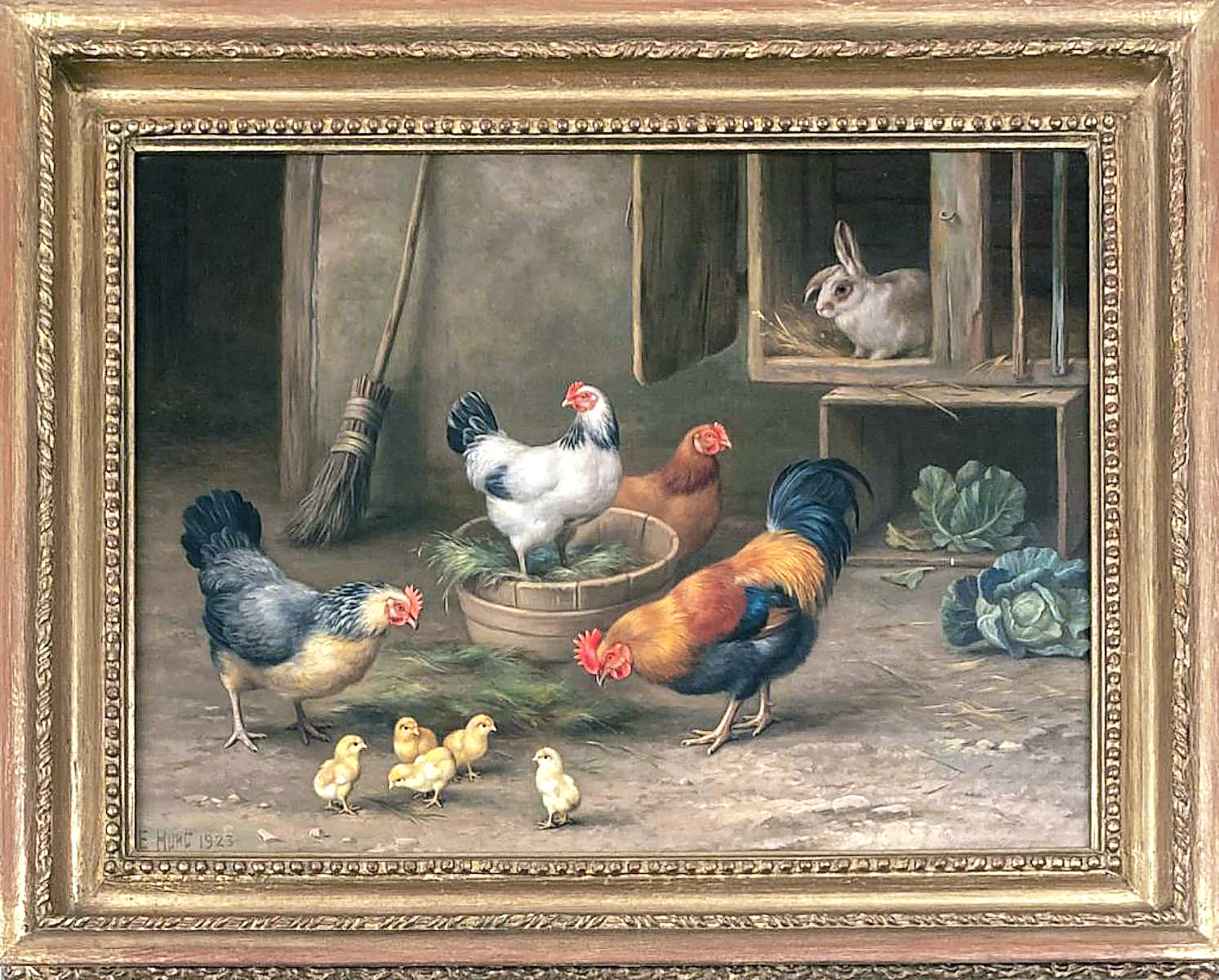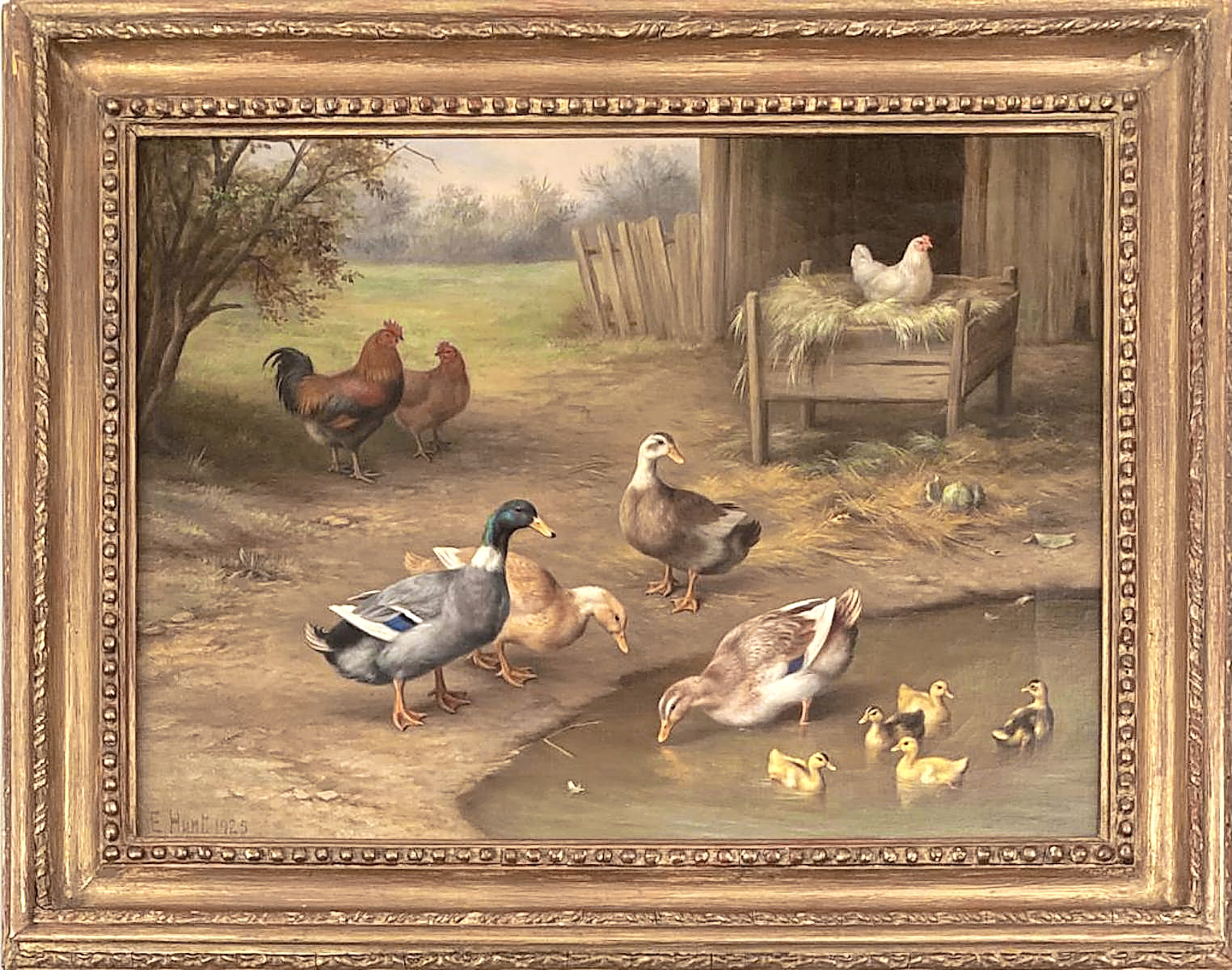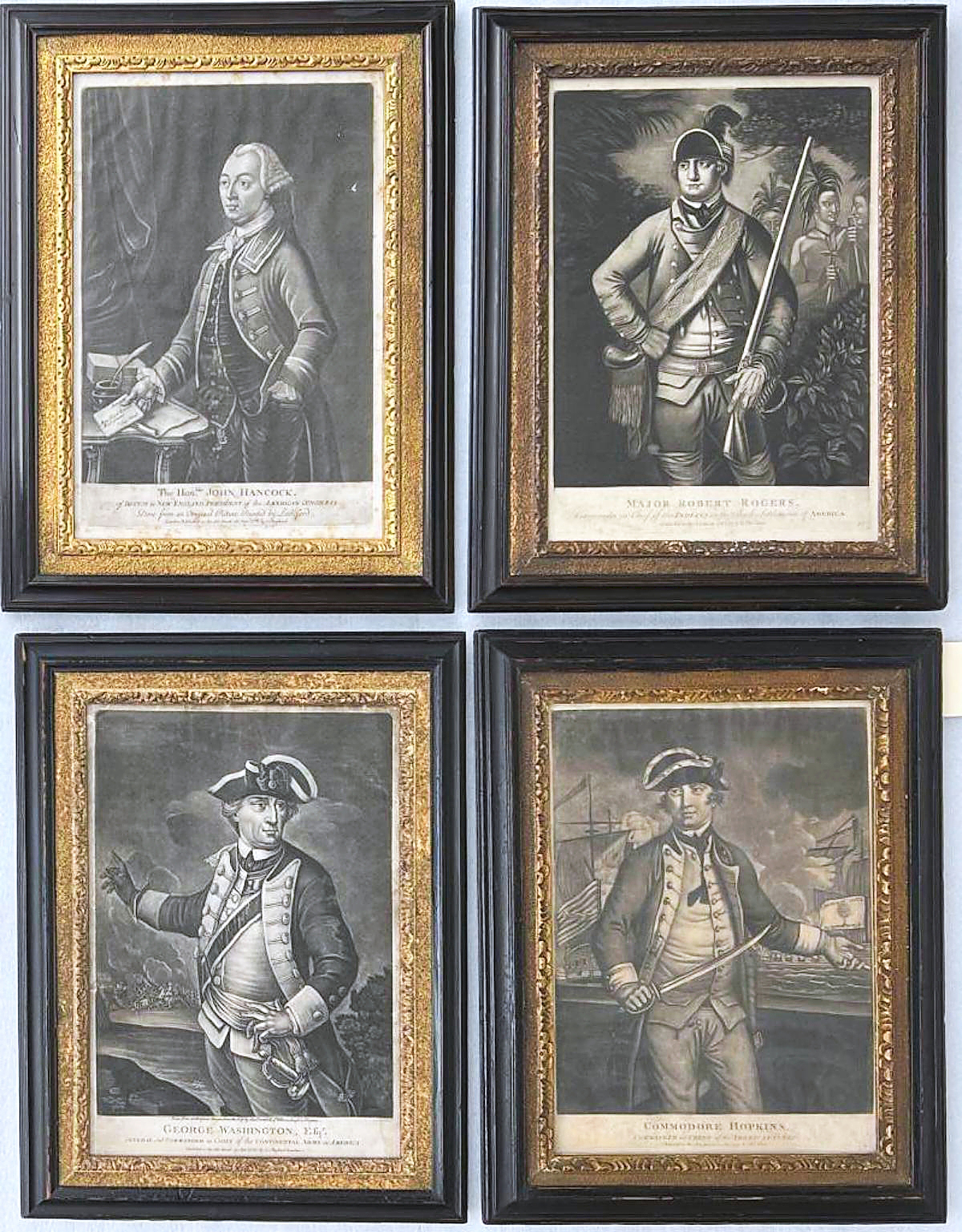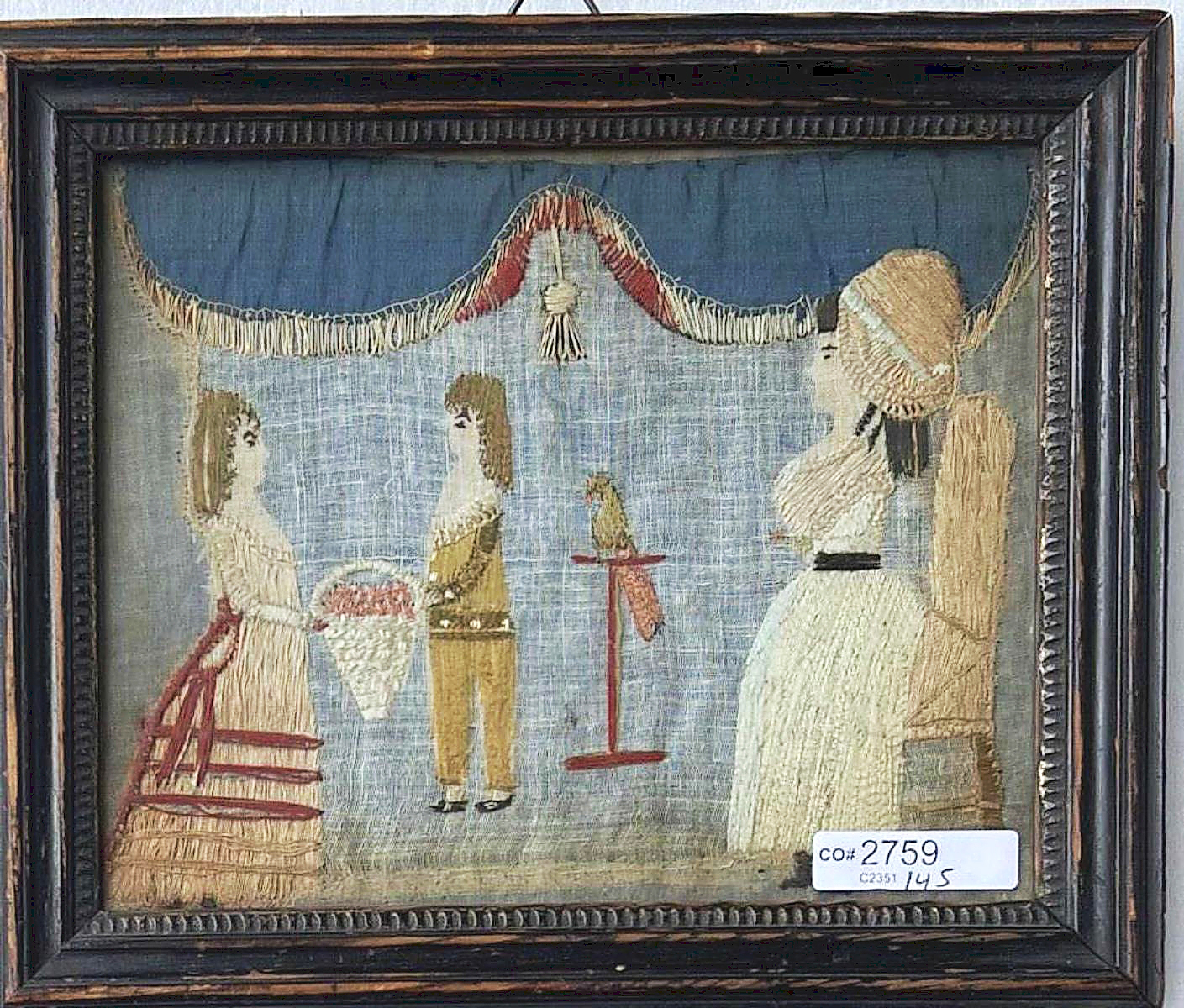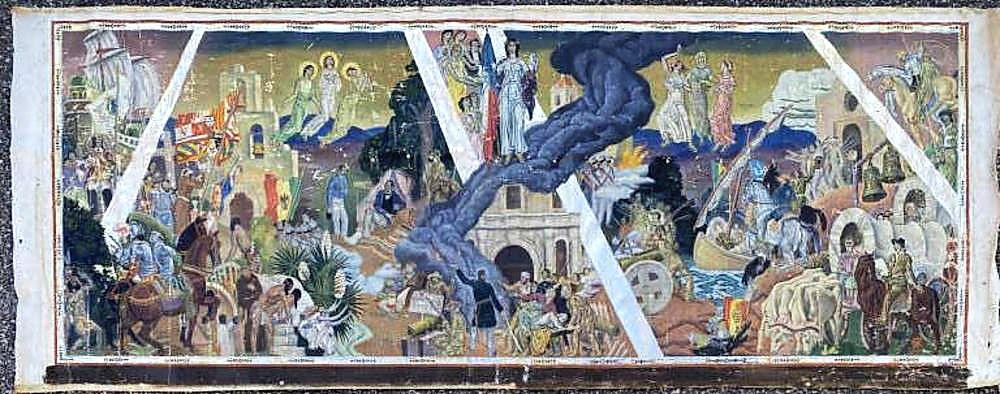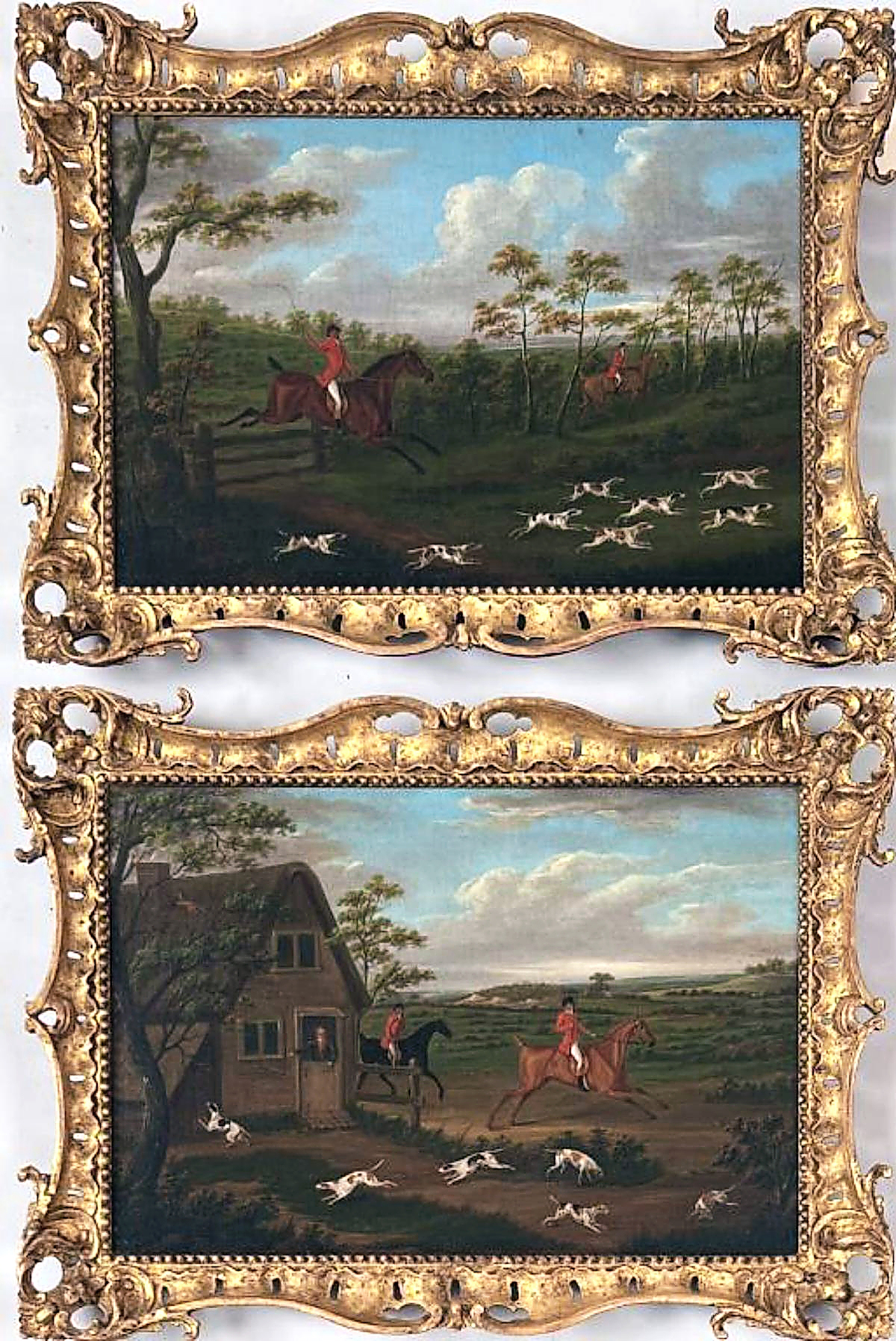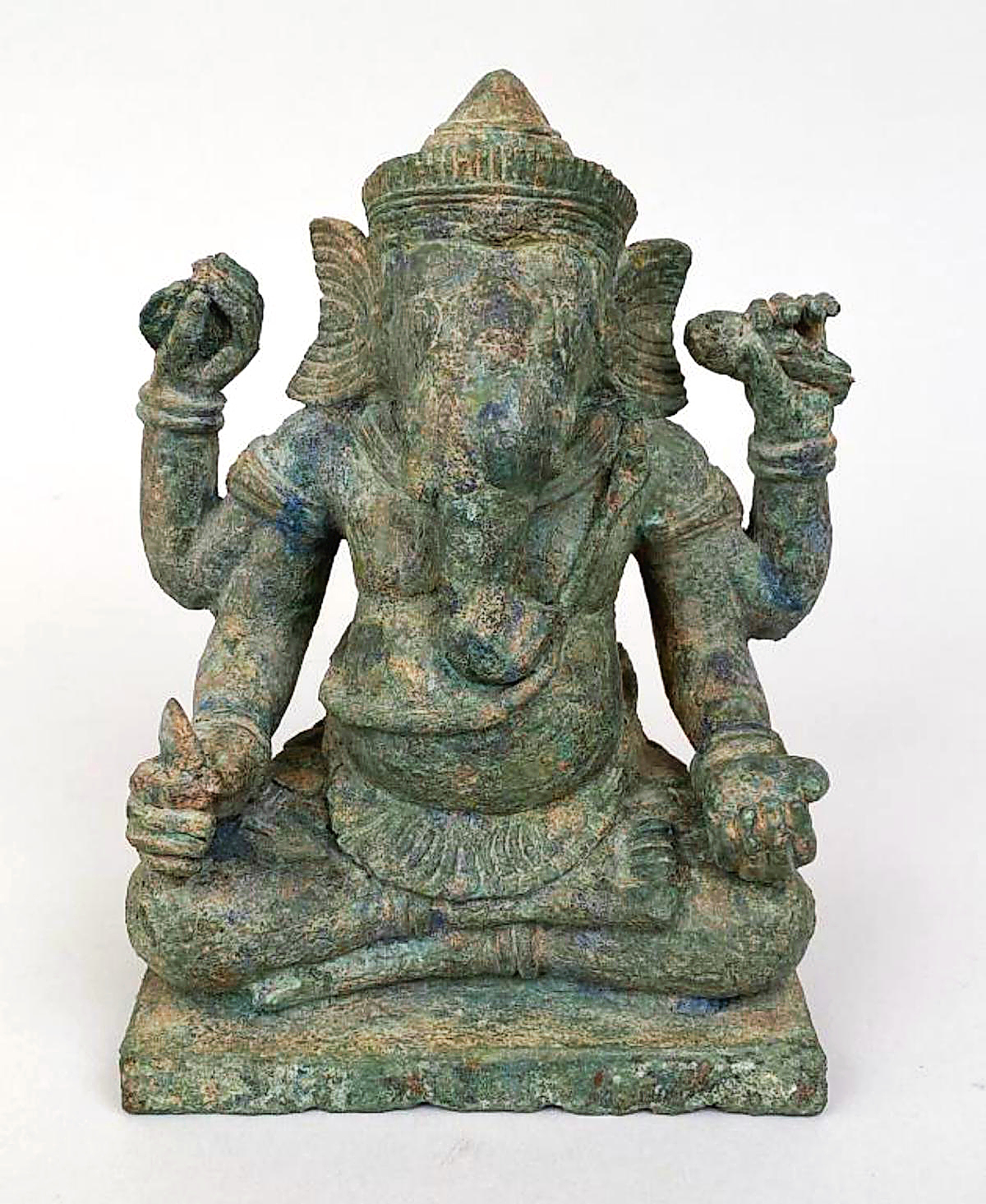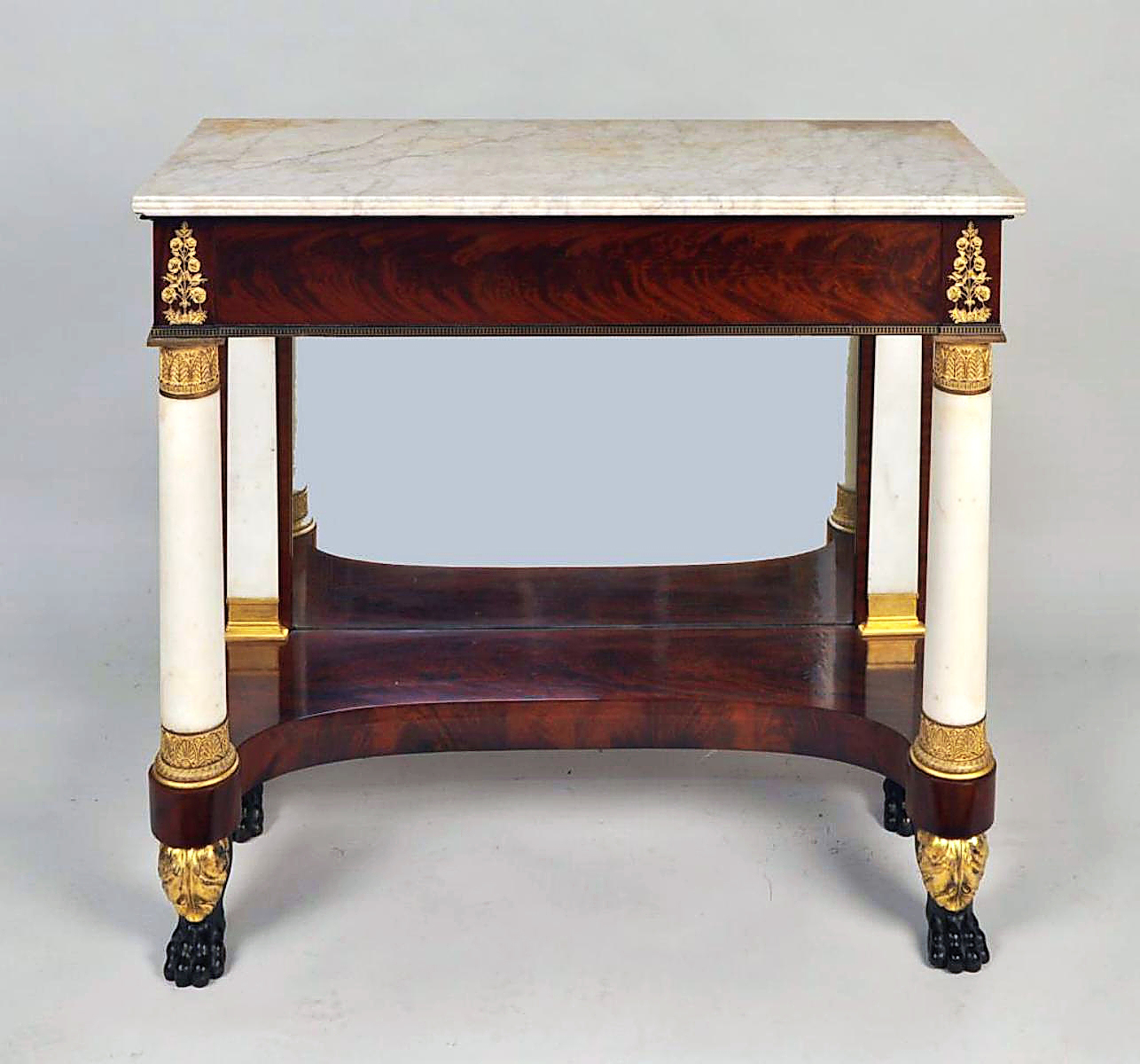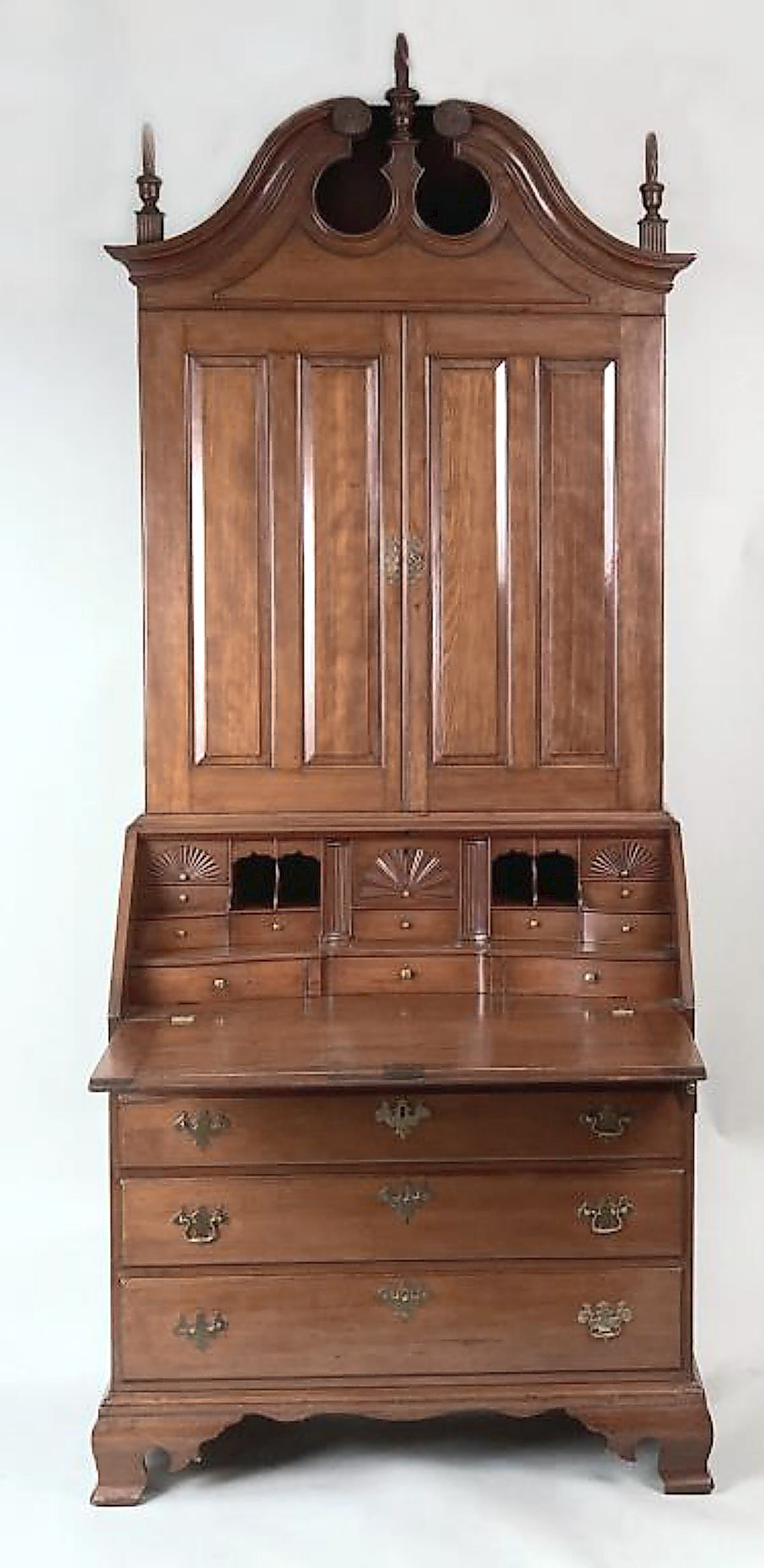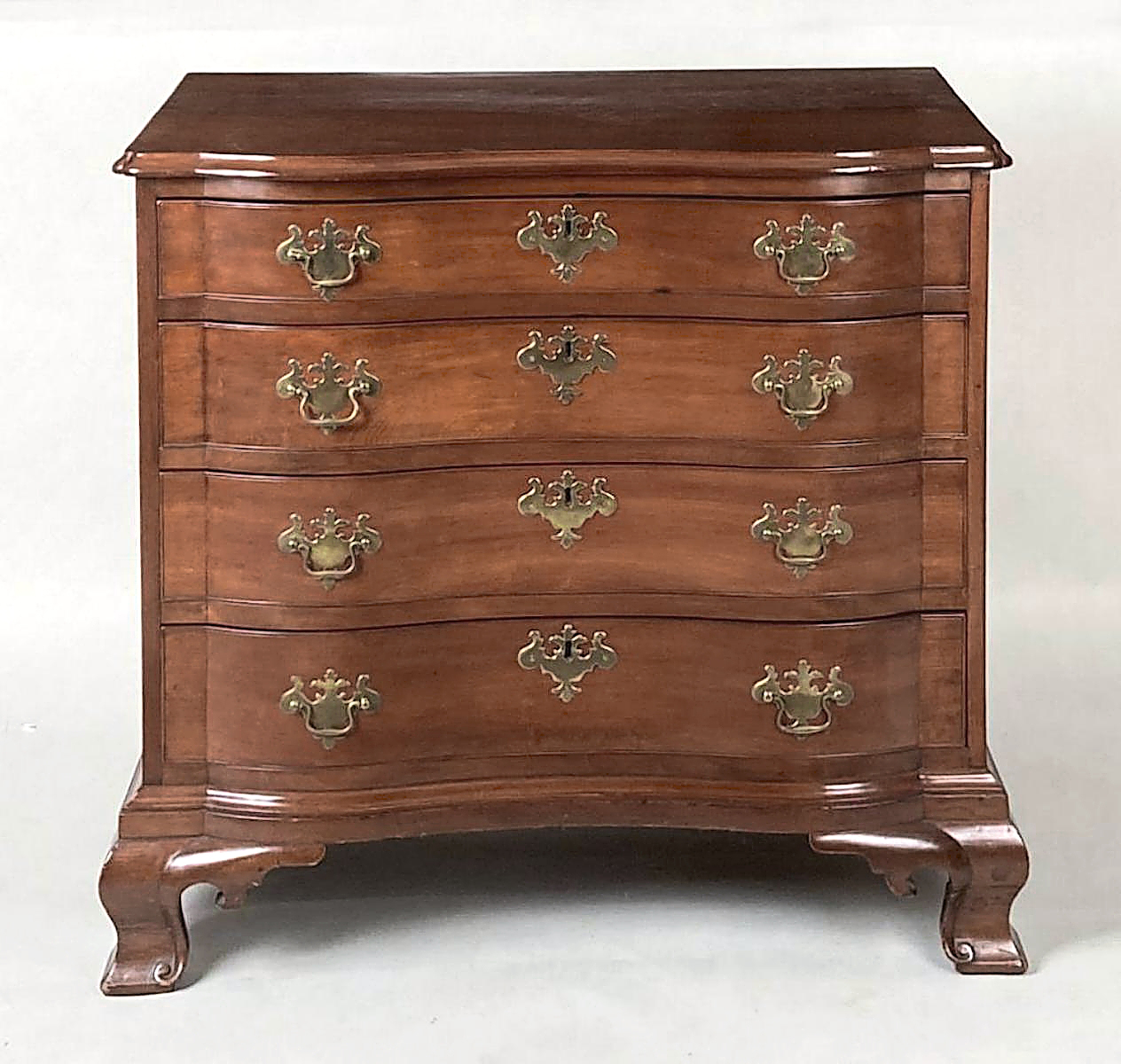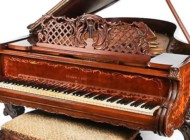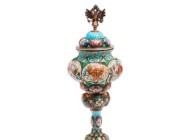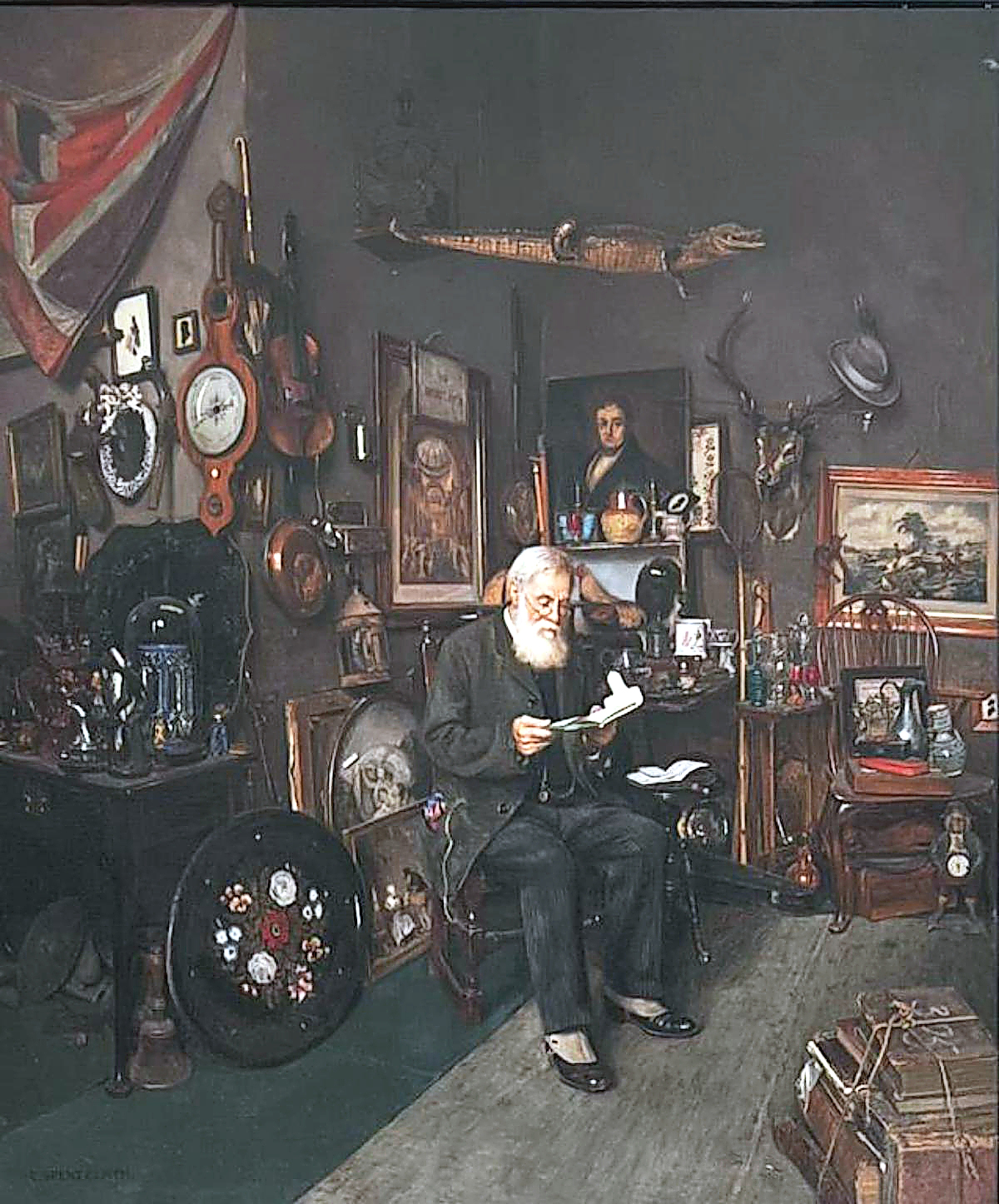
“Overdrawn at the Bank,” Charles Spencelayh, displayed all of the artist’s skills as a miniaturist, and led the auction at $32,250.
Review by Z.G. Burnett; Images Courtesy Schwenke Auctioneers
WOODBURY, CONN. — Schwenke Auctioneers conducted the sale of the Estate of Muriel Gantz & Other Fine Estates on May 23. Gantz and her pre-deceased husband made their home in Greenwich, Conn., and were known for their American art collection, which they began in the 1960s. Out of over 650 lots, 280 came from the Gantz estate, including fine American and English formal and country furniture and decor, fine European porcelain, fine art and folk art, early brass and a carefully selected collection of miniatures.
The auction also offered estate paintings of Eugene Francis Savage (American, 1883-1978), an American realist and surrealist painter who lived the later part of his life in Woodbury. The Savage collection contained more than 45 artworks fresh to the market, consigned by a descendant of the artist. Additional lots were brought from a West Side, New York City estate, among others.
Fine art and works on paper comprised the majority of the upper lots. The first of these was “Overdrawn at the Bank,” an unfortunate genre scene that also served as a morality painting to imprudent collectors, by Charles Spencelayh (British, 1865-1958), from the Gantz estate. Spencelayh was a founding member of the Royal Society of Miniature Painters, which was exhibited in the painting’s minute details, among other honors. The painting’s provenance included Bemrose and Sons, Derby, and Richard Green, London, with its original bill of sale from 1998. The oil on canvas achieved $32,250, bought by a phone bidder. The second highest-selling painting came from Savage, a mural study titled “Just and Unjust Taxes.” The mural was commissioned for the Covington, Ind., courthouse, which was also Savage’s birthplace. The lot included a charcoal sketch of the painting, and doubled its high estimate at $14,190.

Four-panel oil on canvas, mounted on board study for a mosaic in the Queens, N.Y., county courthouse, 1950, from Eugene Savage and George Davidson, which achieved $7,095 ($600/800).
Two four-panel mural studies by Savage were also bid over estimate. First was for a mosaic in the Queens, N.Y., county courthouse from 1950, which was also a collaboration with George Davidson. Davidson may have been Savage’s student or private student or assistant, and the study was bid to $7,095. Another Savage study, which achieved $6,450, for the north wall mural in the 1936 Hall of State building followed. Created for the Texas Centennial Exposition in Dallas at Fair Park, the mural showed scenes of Texan historical events from the earliest explorers to achieving independence in 1836.
Out of five paintings by English artist Edgar Hunt (1876-1953) listed in the sale, three ranked in the top lots and sold for over their estimates. Each showed tranquil barnyard scenes with an assortment of ducks, pigeons, rabbits and chickens. “Chickens, Ducks and Pigeons” and “Chickens and Rabbits in a Farmyard” tied at $8,385, and “Ducks and Hens by a Farmyard Pond” achieved $7,740. Each of these came from Richard Green, London, and were consigned from the Gantz estate.
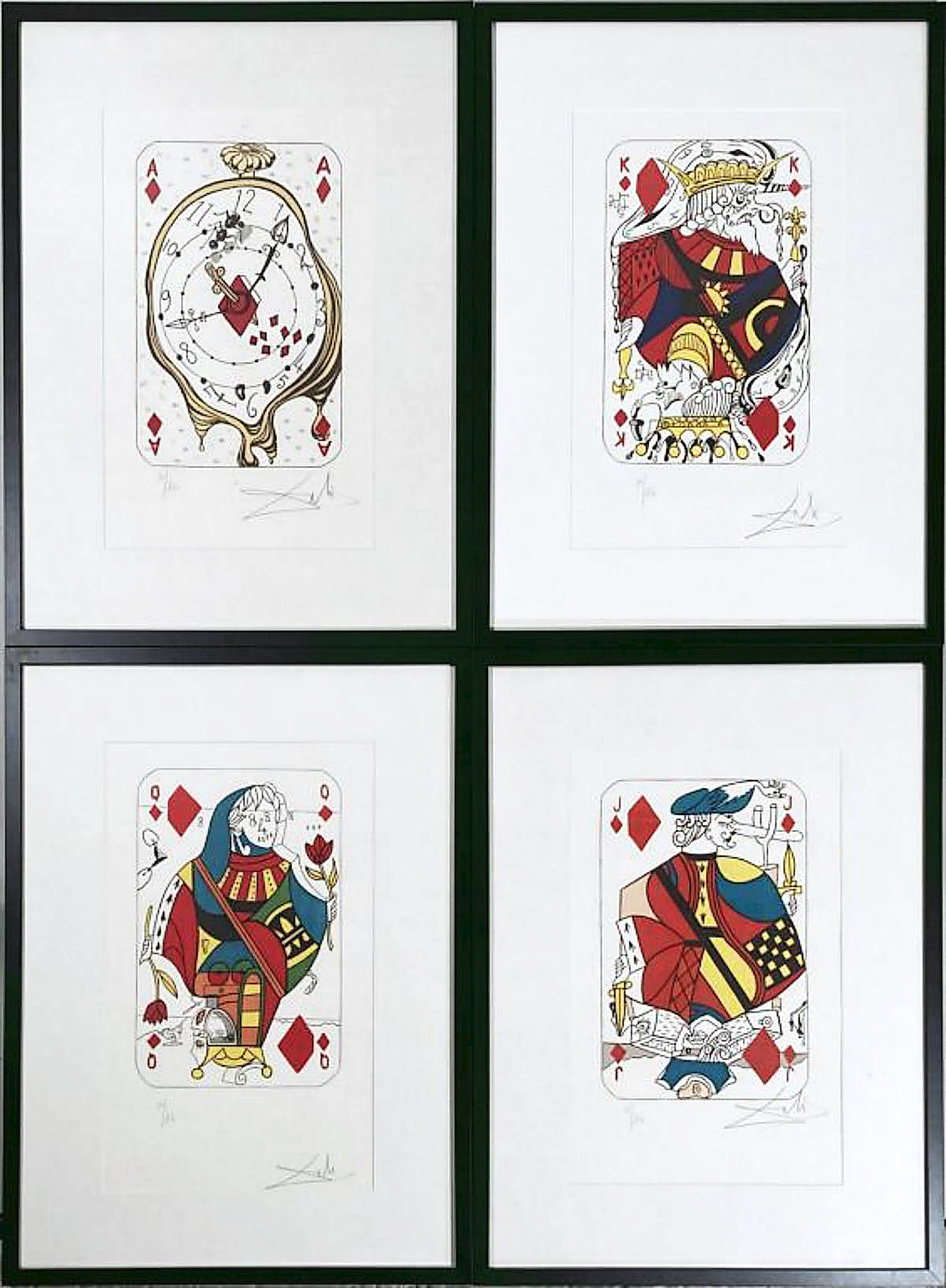
Collection of four lithographs, signed and editioned in pencil by Salvador Dali, which more than doubled its high estimate to $16,770 ($6/8,000).
Two collections of works on paper were prominent in the auction’s top lots. In second place of the overall sale was four prints from “The Playing Card Suite” by Salvador Dali (Spanish, 1904-1989); the hand-colored prints included the Jack, Queen, King and Ace of Diamonds. These were signed and editioned in pencil, and authenticated by the Salvador Dali Research Center, New York City. Despite not being examined out of their frames, the collection was bid to $16,770. This was followed in price by four Eighteenth Century mezzotints showing figures from the American Revolutionary War: “Commodore Hopkins” and “Major Robert Rogers,” published by Thomas Hart in 1776, and “George Washington, Esq” and “The Hon. John Hancock” published by C. Shepherd in 1775 and 1776. Both of these were English publishing houses. Each mezzotint was housed in separate ebonized frames with gilt liners, and sold altogether for $15,480.
One of the auction’s biggest surprises of the auction was an early needlework scene, dated 1790-1810, possibly showing a mother with two children, and their parrot on a perch. Not much else was known about this elaborate but homey piece. It was acquired from John Walton, Inc, with an earlier invoice attribution to Connecticut. The needlework was bought by an online bidder for more than 20 times its original estimate at $11,610.
Furniture was also a popular category with bidders. Leading these was a classical marble carved and gilded mahogany pier table attributed to Duncan Phyfe (Anglo-American, 1770-1854). The table showed round marble columns with bronze capital mounts, a concave base with inset mirror back and set on four painted and gilded carved paw feet, and was made in New York circa 1820. It came from a private collection in Connecticut, ex-Levy Gallery, New York City, and achieved $10,965. Another surprise was a small Seventeenth Century New York tap table in tiger maple and gumwood with its original finish, which sold to an Internet bidder at $7,740.
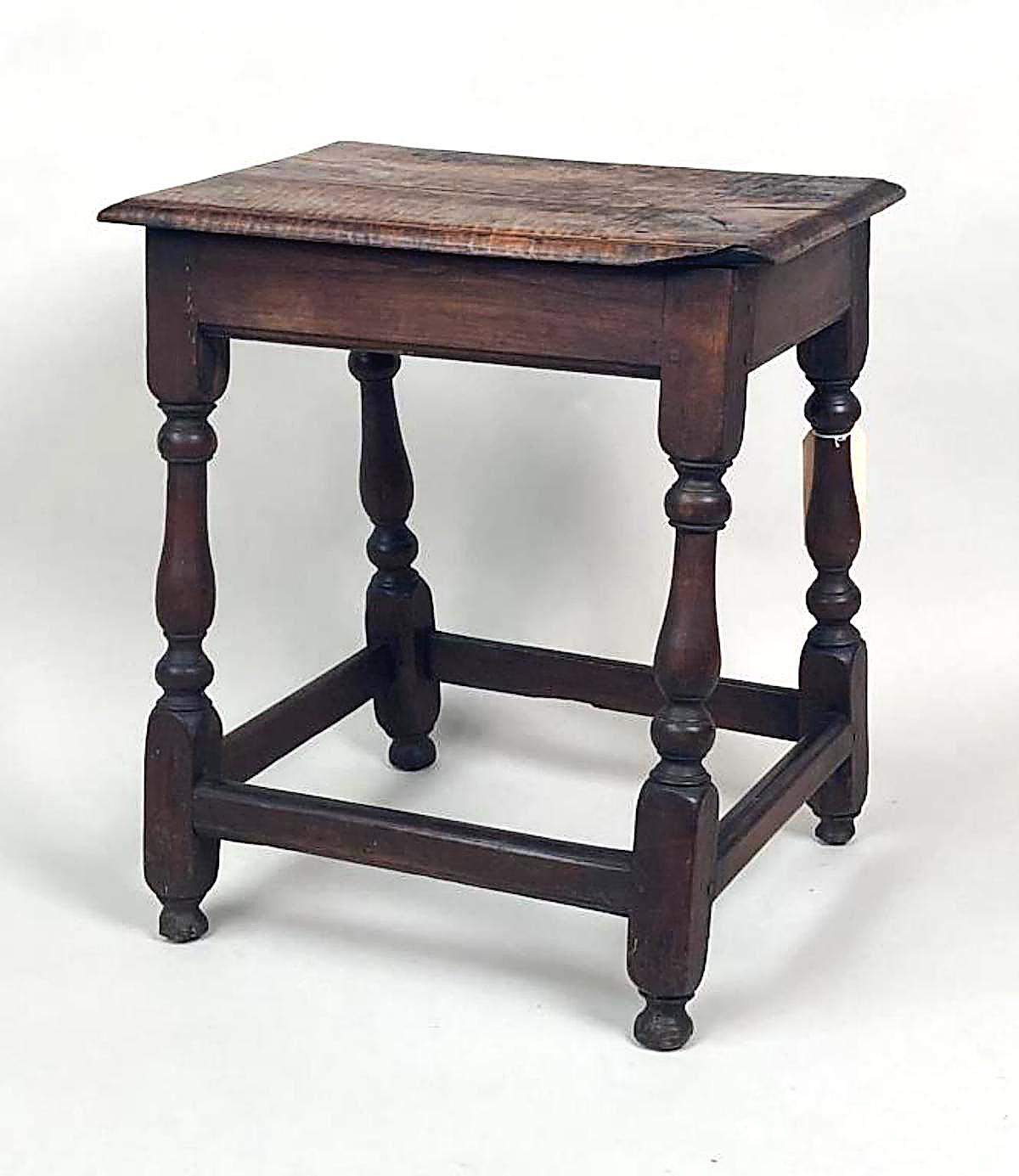
This humble Seventeenth Century New York tap table achieved $7,740 ($1/1,500) from an online bidder.
Fine furniture saw success with a rare Chippendale cherrywood bonnet top secretary-desk with elaborately carved decoration from the bonnet to the ogee feet. The desk was made in eastern Connecticut, circa 1770, its provenance included the Soames Family, Lowell, Mass., Dr Samuel J. Phillips, New York, and John Walton, Inc, and it sold for $7,740. This was followed in price by another Connecticut Chippendale piece in cherry, a reverse serpentine chest also from Walton, showing apparently original hardware. The chest was dated circa 1770-80, and closed at $7,740.
Prices quoted with buyer’s premium as reported by the auction house. For information, www.woodburyauction.com or 203-266-0323.

